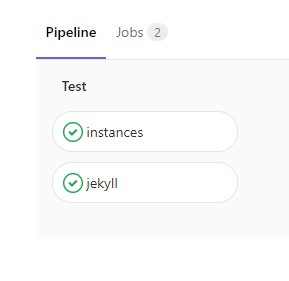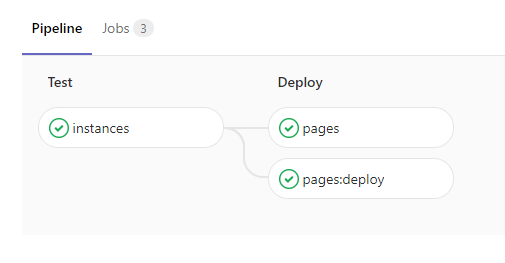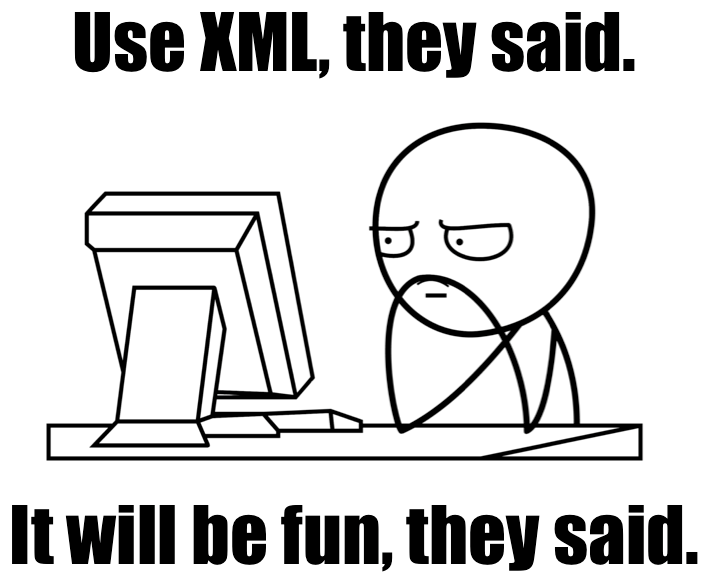VODML Mapping
Ongoing Interoperable Implementations
Omar Laurino, Gerard Lemson,
Tom Donaldson
May 28 2018
Outline
- Modeling Implementations Website (OL)
- Rama, an Astropy-Aware Python parser for VODML (OL)
- Mapping Tool (GL)
- Hubble Source Catalog implementation (TD)
- Demo of interoperability between independent implementations - STScI/JHU/CfA (TD)
- Simplifying the VODML Mapping Syntax (OL)
- Collaborating and Testing: Git and Continuous Integration (OL)
Implementations Website
Modeling Workflow

- Modeling
- Annotating instances
- Parsing instances
Writing Models
- By hand/XML editor
- with a UML tool + translation scripts
- with a Domain Specific Language
Writing Models (JAVA/Groovy DSL)
model("source") {
include("ivoa", version: "1.0")
dataType("Position") {
attribute(name: "ra", dataType: "ivoa:real")
attribute(name: "dec", dataType: "ivoa:real")
}
objectType("Source") {
attribute(name: "name", dataType: "ivoa:real")
attribute(name: "position", dataType: "source:Position")
}
}How to write Instances
- Error prone: we are overloading the xml semantics to describe non-xml data models
- XML validation against VOTable schema, not model semantics
- We don't have a validator yet
How to write Instances
By hand/XML editorWith a UML tool + translation scripts- With a Domain Specific Language
- Gerard's Mapping Tool (point 'n click!)
Jovial (JAVA/Groovy)
def modelLocation = "file:example.vodml.xml"
def ivoaModelLocation = "https://volute.g-vo.org/svn/trunk/projects/dm/vo-dml/models/ivoa/vo-dml/IVOA-v1.0.vo-dml.xml"
dmInstance {
model(vodmlURL: modelLocation)
model(vodmlURL: ivoaModelLocation)
instance(type: "source:Source") {
instance(role: "name", value: "A Source")
instance(role: "position") {
instance(role: "ra", value: 122.02)
instance(role: "dec", value: -12.44)
}
}
}Parsing Annotated VOTables
Parses almost all the single-table patterns
@VO('source:Position')
class Position(BaseType):
ra = Attribute('source:Position.ra', min_occurs=1, max_occurs=1)
dec = Attribute('source:Position.dec', min_occurs=1, max_occurs=1)
@VO('source:Source')
class Source(BaseType):
name = Attribute('source:Source.name', min_occurs=1, max_occurs=1)
position = Attribute('source:Source.position', min_occurs=1, max_occurs=1)Addressing Duality
- Row-based (Objects) vs Column-based (Tables) Views
- Sources: one source per row, multiple per table.
- Light Curves: one per table, data in columns.
Tricky Use Cases
HSC catalog has columns referring to photometry filters.
| ID | ... | Instrument | Filter |
|---|---|---|---|
| 247770718 | ... | WFPC2 | F814W |
| 255488227 | ... | ACS | F606W |
Astropy integration
Astropy is used to parse <TABLE>
Data is represented as Astropy quantities/columns when possible
Astropy integration
Adapters can be provided to decorate VODML objects
from astropy.coordinates import SkyCoord
from rama.models.coordinates import EquatorialCoord
simple_position_file = read("file.vot.xml")
position = simple_position_file.find_instances(StdPosition)[0]
assert isinstance(position.coord, SkyCoord)
assert isinstance(position.coord.__vo_object__, EquatorialCoord)Gerard's Mapping Tool Demo
Tom's HSC and Interoperability Demo
Simplifying the Mapping Syntax
feedback:
- too many elements
- use attribute names only, not full identifies
- leave annotation unchanged when
FIELDs becomePARAMs and vice-versa - remove
LITERALand only useCONSTANT/COLUMN?
Simplifying the Mapping Syntax
You can only start by mapping VODML concepts (roles, types) to VOTable concepts (tables, columns, params)
Simplifying the Mapping Syntax
Before
<INSTANCE ID="_source" dmtype="source:Detection">
<COMPOSITION dmrole="source:Source.position">
<INSTANCE dmtype="source:SourcePosition">
<ATTRIBUTE dmrole="meas:CoordMeasure.coord">
<INSTANCE dmtype="coords:domain.space.EquatorialCoord">
<ATTRIBUTE dmrole="coords:domain.space.EquatorialCoord.ra">
<COLUMN ref="SourceRA" dmtype="ivoa:real"/>
</ATTRIBUTE>
<ATTRIBUTE dmrole="coords:domain.space.EquatorialCoord.dec">
<COLUMN ref="SourceDec" dmtype="ivoa:real"/>
</ATTRIBUTE>
<REFERENCE dmrole="coords:Coordinate.frame">
<IDREF>_icrs_</IDREF>
</REFERENCE>
<ATTRIBUTE dmrole="omar:Made.this.up">
<CONSTANT ref="_SOME_PARAM" dmtype="ïvoa:real"/>
</ATTRIBUTE>
<ATTRIBUTE dmrole="omar:Something.different">
<LITERAL value="42" dmtype="ïvoa:real"/>
</ATTRIBUTE>
</INSTANCE>
</ATTRIBUTE>
</INSTANCE>
</COMPOSITION>
</INSTANCE>After
<INSTANCE ID="_source" dmtype="source:Detection">
<ROLE dmrole="position">
<INSTANCE dmtype="source:SourcePosition">
<ROLE dmrole="coord">
<INSTANCE dmtype="coords:domain.space.EquatorialCoord">
<ROLE dmrole="ra">
<INSTANCE ref="SourceRA" dmtype="ivoa:real"/>
</ROLE>
<ROLE dmrole="dec">
<INSTANCE ref="SourceDec" dmtype="ivoa:real"/>
</ROLE>
<ROLE dmrole="frame">
<IDREF>_icrs_</IDREF>
</ROLE>
<ROLE dmrole="up">
<INSTANCE ref="_SOME_PARAM" dmtype="ïvoa:real"/>
</ROLE>
<ROLE dmrole="different">
<INSTANCE value="42" dmtype="ïvoa:real"/>
</ROLE>
</INSTANCE>
</ROLE>
</INSTANCE>
</ROLE>
</INSTANCE>Two different approaches
- model driven
- annotation driven/dynamic
My recommendation
- Explicit syntax is trivial-to-simple to implement for single table cases
- Maybe replace
COMPOSITON,REFERENCE,ATTRIBUTEwithROLE - Using attribute names imho only facilitates dynamic parsers
- Merging
CONSTANTandCOLUMNis a mess (compelling use case?)
Implementations repository
- Volute simply doesn't cut it, for so many reasons.
- Model changes require changes to many examples/notebooks
- Git(Lab) repository with Continuous Integration:
- static pages are built upon push (jekyll)
- tests are run
- pages are deployed.
Gitlab-CI Pipelines


Tests


Thank you!

Understanding XML: The Human’s Guide to Machine-Readable Data